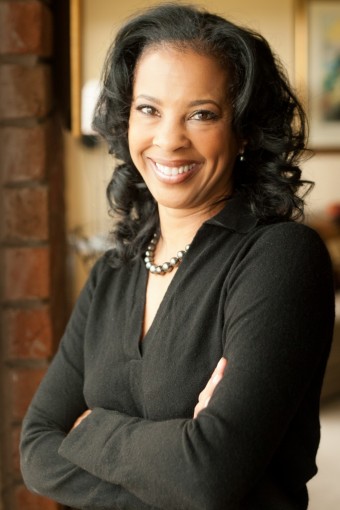 Regina Jackson, EOYDC President and CEO
Regina Jackson, EOYDC President and CEO
Since the East Oakland Youth Development Center (EOYDC) first opened its doors 37 years ago, The Clorox Company has partnered with the organization to strengthen the community surrounding our corporate headquarters by providing financial and volunteer support.
We recently caught up with EOYDC President and CEO Regina Jackson, who is overseeing an $11-million renovation and expansion for the Center. The 5,000 square foot expansion will enable the EOYDC to add up to 1,000 new students to the 2,000 they currently work with. We asked Regina a few questions about the deep impact the nonprofit has made, and its most recent initiatives to improve services for the children and young adults that it currently serves from distressed urban neighborhoods.
Can you give us background on who EOYDC helps? Since 1978, we’ve helped roughly 30,000 people between ages 6 and 24 who come from challenging home or school environments where there’s a high dropout and unemployment rate. There is a lack of resources to help these kids find their own pathway towards success in the world.
What kind of programs does the Center offer to help young people? The Center provides an infrastructure to help youth traverse whatever challenges they might have. It helps them to learn about different subject areas and choose careers that are right for them. We deliver skill sets that will make them competitive and successful in the working world. We have specific job training and placement, GED, and arts and wellness programs. We offer kids the chance to take classes on subjects ranging from computers to cooking to dance; many of our youth go into careers in those areas. We also have sports programs like track and field, and basketball. These programs bring kids in from different schools around the city to enable them to make friends and experience life beyond their own neighborhoods. We’ve sent more than 100 kids to major universities on full scholarships for track and field.
Since 2003, EOYDC has run the Pathway to College program that has had a strong impact on students who are approaching college. What does the program address and why is it so successful? Although we had GED programs and after-school leadership academies, we realized that we were lacking a program to help kids navigate their way through the college experience. Most of the kids we work with are the first in their families to go to college. They don’t have anyone to turn to for advice. So we created Pathway to College, which offers workshops three days a week on character-based leadership, plus conversations around personal statements, college applications, and even proper nutrition for when kids live on their own. We also bring them on out-of-town college tours so they can connect the concepts we talk about in class with the real-world landscape. This way, they’ll know how to employ what they have learned.
Pathway to College added an international mission in 2013. Can you tell us about that? In 2012 we discovered from our U.S. Congresswoman, Barbara Lee, that there was an opportunity to take kids to China as part of President Obama’s “100,000 Strong” initiative. We wanted young people from low-income areas to go because they are the least likely to ever travel like to China on their own. So we brought 13 kids to China in 2013. We not only had study sessions with Chinese students, but we also visited offices and manufacturing facilities for Toyota, Coca-Cola and American Express to understand how business operates in China. We also worked on an improvement project for a community center that is a smaller version of EOYDC. Our work was reported on by the Republic of China’s official web site. Several months later, we organized a second trip as part of the My Brother’s Keeper” federal initiative, which is for college-bound people of color. This time, we took 9 high-school students and 5 college students who were focused on science, technology, engineering and math (STEM) education. We stayed in a polytechnic university for a few days while we studied and visited museums. We then used Skype to report from China to a White House delegate for education issues.
How do initiatives like Pathway to College and these China missions inspire both the participants as well as other kids at EOYDC? The amount that our young travelers learned was enormous. As soon as they returned from China, they began to eagerly share their worldly perspectives with other students. We now have graduates of the Pathway program across 50 college campuses and many of them are sharing their knowledge with people in those communities who don’t have a support system. That is part of the leadership model we use: be a positive contributor to society wherever you are. We recently did a mapping project of several hundred Pathway students, following them into their professional careers. Eighty-six percent finished college in 4 years—an outstanding feat—and their careers are spread out across the sectors of business, nonprofit, education, and athletics. With the Pathway program, it often takes just a few sessions for the light bulb to go on in the head of a young person, where they say “I believe in me, and I am going to do this.”
What is the biggest challenge EOYDC faces as it moves forward? The biggest challenge we have is combating hopelessness. Research documents the psychological trauma that exists in challenged urban communities, where kids hear gunshots and ambulances, and encounter extreme circumstances that aren’t their doing. With kids who are in survival mode, we burrow through that so they can give hope for something better. So we will continue to welcome kids here, communicate our expectations of success, and expose them to opportunities that prove just how much is possible if they are willing to do the work.
Visit EOYDC’s website to learn how you can volunteer as a mentor or tutor, or to donate to the EOYDC. http://www.thecloroxcompany.com/corporate-responsibility/blog/how-eoydc-is-broadening-2000-young-minds-qa-with-regina-jackson/

